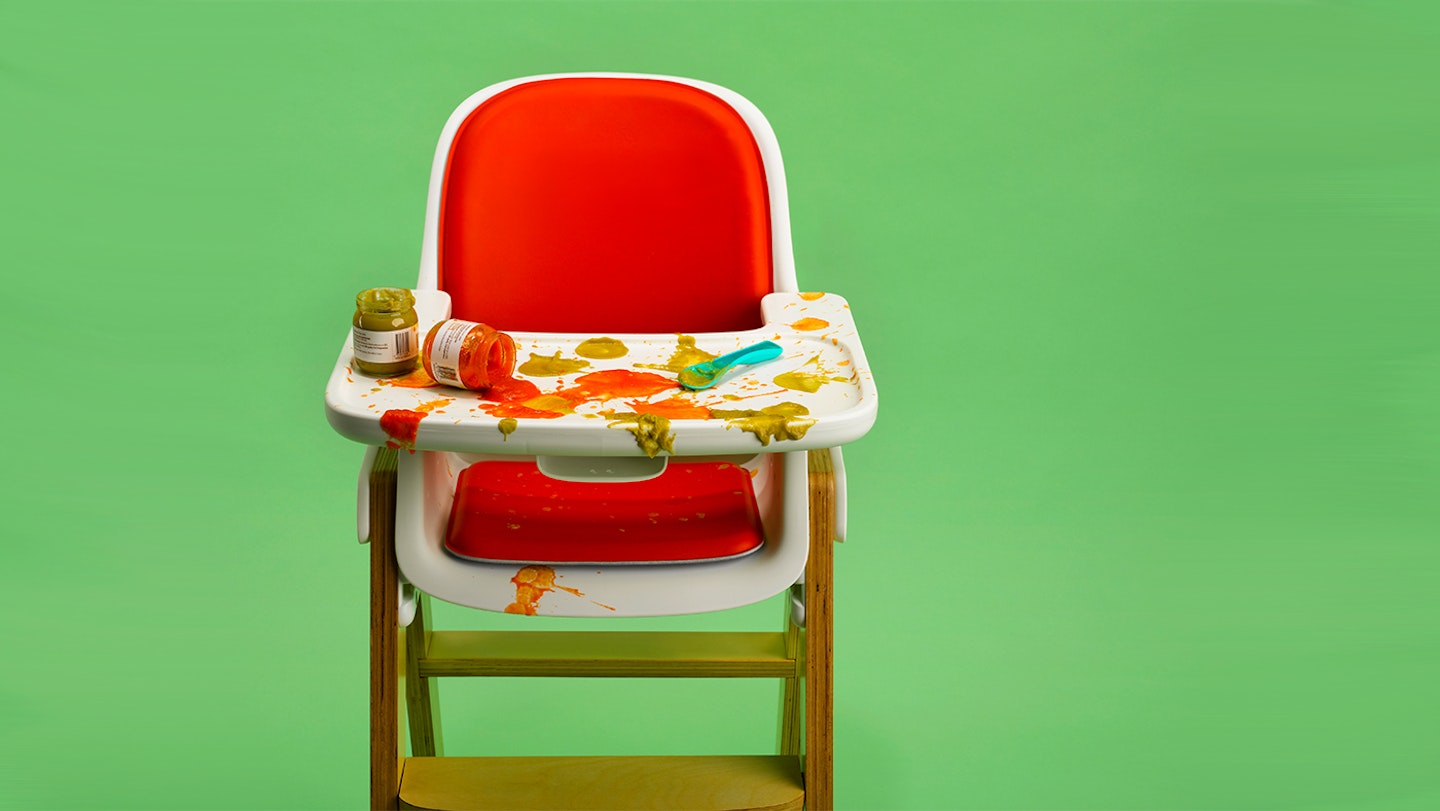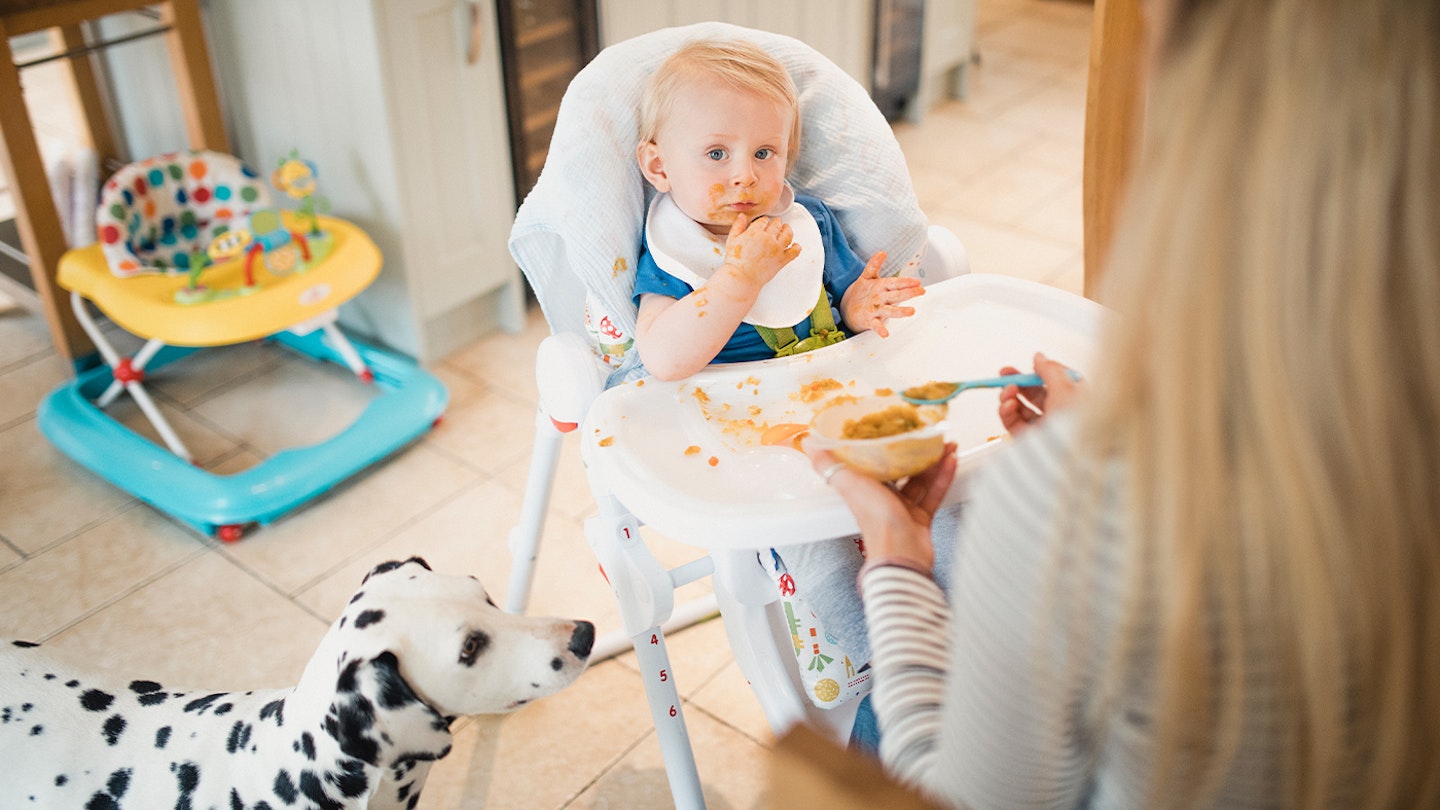High chairs can face their fair share of messy mealtimes over the years, and from hard to reach crumbs and tomato sauce stains, they can be a bit of a pain to keep clean.
While cleaning their high chair might be the last thing you want to do after they've had their dinner, the sooner you clean it the less difficult it'll be. And in the long-run, it'll be less work for you cleaning little and often than leaving until there's food caked all over it.
To help you master the process, we've put together a step-by-step guide on how to clean a high chair to make the process nice and easy for you.
How to clean a high chair: A step-by-step guide
Step one: Brush off food crumbs
To avoid a lot of crumbs building up in those hard to reach areas, brush off the crumbs onto the floor and give the floor a vacuum. Alternatively, pick up any crumbs in a dishcloth and rinse.
Step two: Wipe it down
Once all the crumbs have been removed, give the high chair a good wipe down with a damp cloth covering the seat, cushions, crevices, underneath the tray, side buttons and anywhere else food may have reached to prevent food build up.
Step three: Disinfect the tray
The most important area to keep clean is the tray area as this is what your child will be eating off. You can do this by either wiping with a disinfectant wipe, spraying with white wine vinegar and leaving for a few minutes before wiping, or wiping with a diluted bleach solution and leaving to dry.
Step four: Clean the chair, legs and exterior
Give the chair and the space below it a good clean with a damp cloth. You'll also want to disinfect other areas like the legs, underneath and full exterior of the high chair.
Step five: Wash the fabric components
If your high chair has a fabric seat, cushions or fabric straps, it's a good idea to remove these and pop them in the washing machine. Just remember to read the care label before you do this. If they can't go in the washing machine, simply leave them in a sink or tub of detergent to soak before rinsing off and leaving to air dry.
Step five: Clean the crevices
Remove any crumbs and clean hard to reach areas that you might have missed as this is where baby food can often get stuck. Think fabric seams, the holes where the straps come through and the release button. You could use things like an old toothbrush or toothpick to clean these areas.

How often should I clean a high chair?
Daily tasks
• Brushing off crumbs
• Sanitising the tray
• Wiping off food
Weekly tasks
• Cleaning the entire seat
Monthly tasks
• Taking the high chair apart and cleaning all the separate areas
• Removing stuck-on food
• Cleaning food from small crevices
• Cleaning all the straps and cushions
What should I do about tough stains?
Liberally spray your high chair with a solution of half water, half vinegar and allow to sit for 5-10 minutes. Give the tough stains a good scrub and wipe the whole thing down with a damp cloth. Another alternative way to remove larger stubborn pieces of food is to take your high chair outside and hose it down.
Why can't I just wipe it down?
Although a regular wipe down might make the high chair appear cleaner, giving your high chair a deeper clean is essential to keeping your tot's mealtimes healthy.
Also, all parents will know that it's not just food that gets stuck on high chairs, but your little one may also have an accident or be sick in their high chair too. That's why it's important to give your seat a regular deep clean too, as this bacteria can be very harmful.
